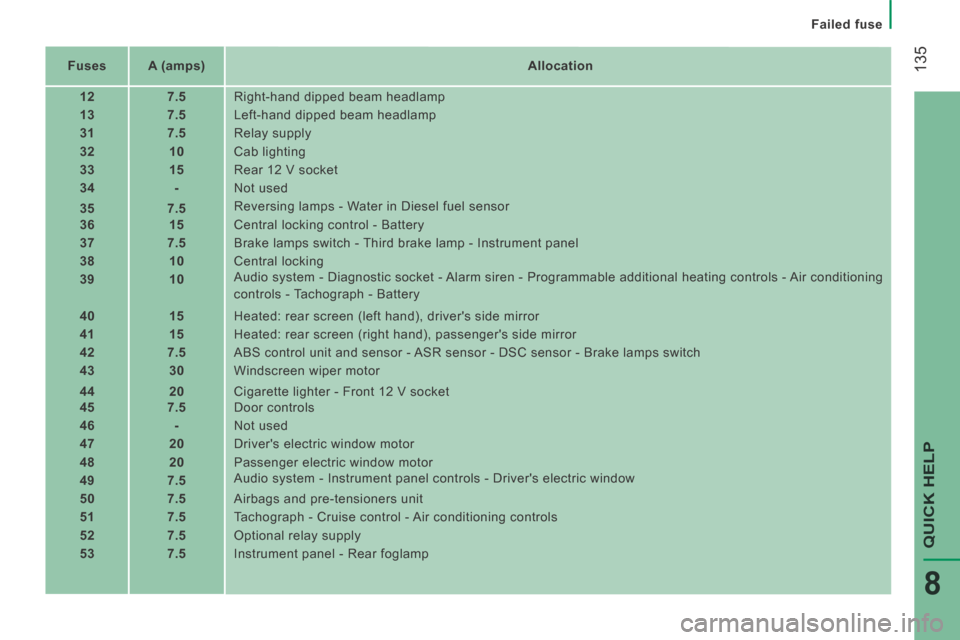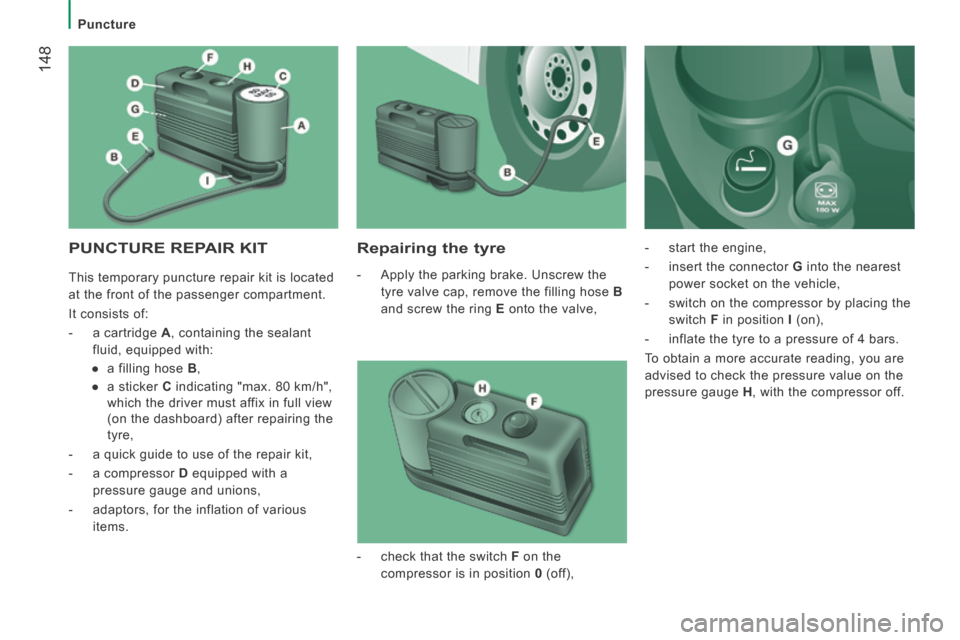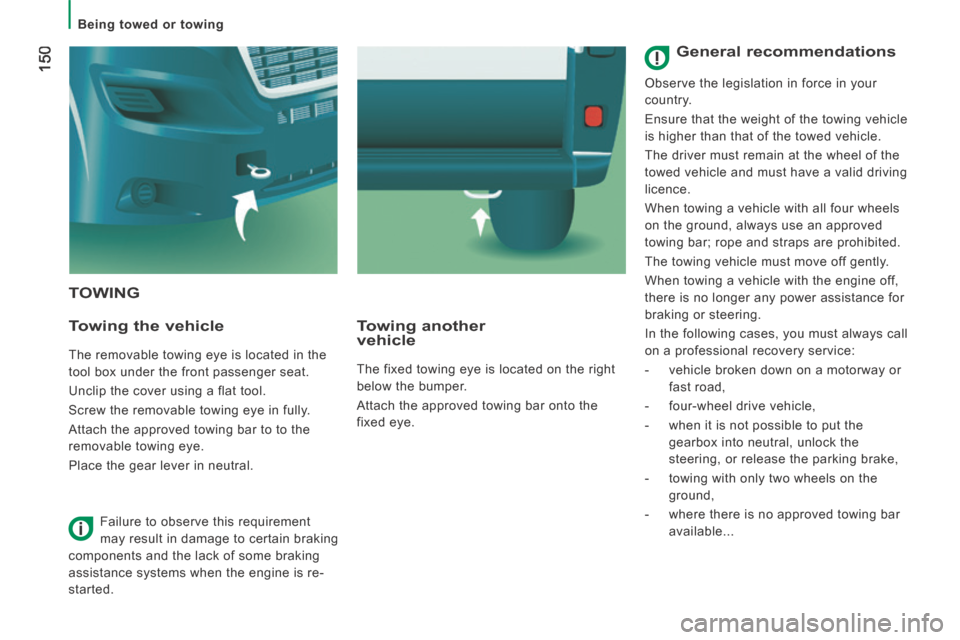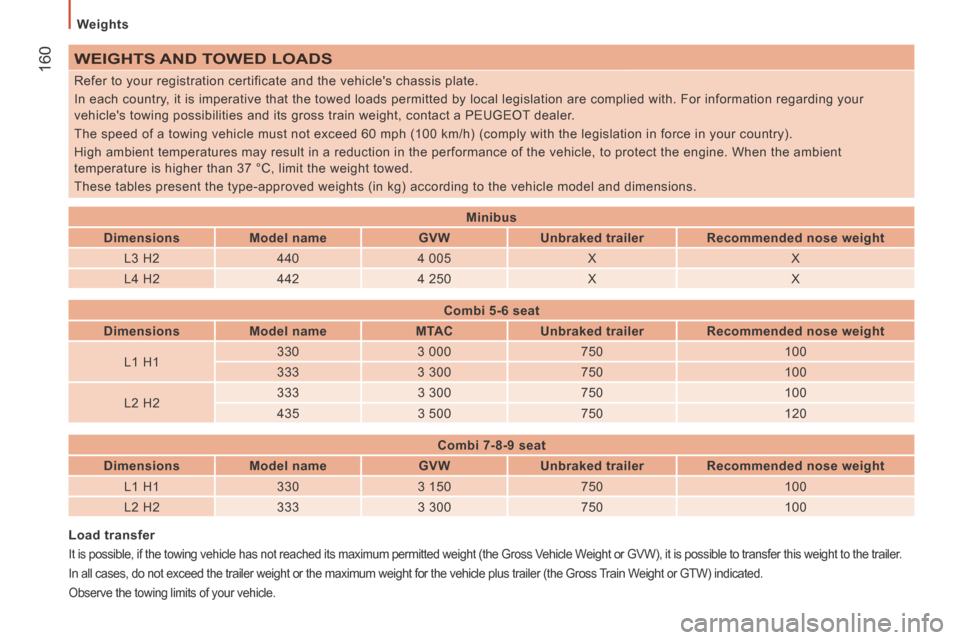Page 137 of 240

135
QUICK HELP
8
Failed fuse
Fuses A (amps) Allocation
12 7.5 Right-hand dipped beam headlamp
13 7.5 Left-hand dipped beam headlamp
31 7.5 Relay supply
32 10 Cab lighting
33 15 Rear 12 V socket
34 - Not used
35 7.5 Reversing lamps - Water in Diesel fuel sensor
36 15 Central locking control - Battery
37 7.5 Brake lamps switch - Third brake lamp - Instrument panel
38 10 Central locking
39 10 Audio system - Diagnostic socket - Alarm siren - Programmable additional heating controls - Air conditioning
controls - Tachograph - Battery
40 15 Heated: rear screen (left hand), driver's side mirror
41 15 Heated: rear screen (right hand), passenger's side mirror
42 7.5 ABS control unit and sensor - ASR sensor - DSC sensor - Brake lamps switch
43 30 Windscreen wiper motor
44 20 Cigarette lighter - Front 12 V socket
45 7.5 Door controls
46 - Not used
47 20 Driver's electric window motor
48 20 Passenger electric window motor
49 7.5 Audio system - Instrument panel controls - Driver's electric window
50 7.5 Airbags and pre-tensioners unit
51 7.5 Tachograph - Cruise control - Air conditioning controls
52 7.5 Optional relay supply
53 7.5 Instrument panel - Rear foglamp
Page 144 of 240
142
Failed bulb or lamp
Rear lamps
For more information on the bulbs, refer to
the table "Types of bulb or lamp".
Carry out these operations in reverse order
to fit the new bulb.
1. Brake lamps
Type B, P21W - 21W
2. Brake/sidelamps
Type B, P 21/5W - 21W and 5W
3. Direction indicators
Type B, PY 21W - 21W
4. Reversing lamps
Type A, W16W - 16W
5. Foglamp
Type A, W16W - 16W - Identify the failed bulb then open the
rear doors.
- Remove the corresponding access cover by removing the seven fixing screws
(van)
or
Remove the corresponding access cover by pulling on its grip to unclip it (combi). - Disconnect the electrical connector by
pressing on its central tongue.
- Remove the two fixing nuts of the lens.
- Pull the lens from the outside.
- Remove the six bulb holder fixing screws.
- Spread the three retaining tongues and remove the bulb holder from its housing.
- Change the bulb.
Page 145 of 240
143
QUICK HELP
8
Failed bulb or lamp
Third brake lamp
Type B , P21W - 21W
- Unscrew the two screws.
- Remove the lamp.
- Remove the bulb holder moving aside the two tabs.
- Remove the faulty bulb by pressing it lightly while turning it anticlockwise.
- Change the bulb.
Number plate lamps
Type C, C5W - 5W
- Press the point, indicated by the arrow, then remove the plastic lens.
- Remove the failed bulb by moving aside the two contacts.
- With the new bulb in place, ensure that it is secured correctly between the
two contacts.
- Replace the plastic lens and press on it to lock it in place.
Page 147 of 240
145
QUICK HELP
8
Puncture
Parking the vehicle
As far as possible, park the vehicle on level,
stable and non-slippery ground.
Apply the parking brake, switch off the
ignition and engage first gear.
Put on a high visibility vest and position the
warning triangle on the road.
Tools
These are located in a box under the front
passenger seat cushion.
- Turn the button a quarter of a turn then pull the box.
- After use, press the button then turn it a quarter of a turn to secure the box.
A. Long socket.
B. Ratchet wrench.
C. Jack.
D. Removable towing eye.
E. Wheelbrace.
F. Screwdriver.
CHANGING A WHEEL
You must ensure that the occupants get out
of the vehicle and wait in a safe location.
If possible, place a chock under the
wheel diagonally opposite the wheel to be
changed. The jack and the tool kit are specific to
your vehicle. Do not use them for other
purposes.
Never go underneath a vehicle supported
only by a jack (use an axle stand).
Page 150 of 240

148
Puncture
PUNCTURE REPAIR KIT Repairing the tyre
- Apply the parking brake. Unscrew the tyre valve cap, remove the filling hose B
and screw the ring E onto the valve, - start the engine,
- insert the connector G
into the nearest
power socket on the vehicle,
- switch on the compressor by placing the switch F in position I (on),
- inflate the tyre to a pressure of 4 bars.
To obtain a more accurate reading, you are
advised to check the pressure value on the
pressure gauge H , with the compressor off.
- check that the switch F on the
compressor is in position 0 (off),
This temporary puncture repair kit is located
at the front of the passenger compartment.
It consists of:
- a cartridge A
, containing the sealant
fluid, equipped with:
● a filling hose B ,
● a sticker C indicating "max. 80 km/h",
which the driver must affix in full view
(on the dashboard) after repairing the
tyre,
- a quick guide to use of the repair kit,
- a compressor D equipped with a
pressure gauge and unions,
- adaptors, for the inflation of various items.
Page 152 of 240

150
Being towed or towing
TOWING
Towing the vehicle
The removable towing eye is located in the
tool box under the front passenger seat.
Unclip the cover using a flat tool.
Screw the removable towing eye in fully.
Attach the approved towing bar to to the
removable towing eye.
Place the gear lever in neutral.
Towing another vehicle
The fixed towing eye is located on the right
below the bumper.
Attach the approved towing bar onto the
fixed eye.
Failure to observe this requirement
may result in damage to certain braking
components and the lack of some braking
assistance systems when the engine is re-
started.
General recommendations
Observe the legislation in force in your
country.
Ensure that the weight of the towing vehicle
is higher than that of the towed vehicle.
The driver must remain at the wheel of the
towed vehicle and must have a valid driving
licence.
When towing a vehicle with all four wheels
on the ground, always use an approved
towing bar; rope and straps are prohibited.
The towing vehicle must move off gently.
When towing a vehicle with the engine off,
there is no longer any power assistance for
braking or steering.
In the following cases, you must always call
on a professional recovery service:
- vehicle broken down on a motorway or fast road,
- four-wheel drive vehicle,
- when it is not possible to put the gearbox into neutral, unlock the
steering, or release the parking brake,
- towing with only two wheels on the ground,
- where there is no approved towing bar available...
Page 162 of 240

160
Weights
WEIGHTS AND TOWED LOADS
Refer to your registration certificate and the vehicle's chassis plate.
In each country, it is imperative that the towed loads permitted by local legislation a\
re complied with. For information regarding your
vehicle's towing possibilities and its gross train weight, contact a PEU\
GEOT dealer.
The speed of a towing vehicle must not exceed 60 mph (100 km/h) (comp\
ly with the legislation in force in your country).
High ambient temperatures may result in a reduction in the performance o\
f the vehicle, to protect the engine. When the ambient
temperature is higher than 37 °C, limit the weight towed.
These tables present the type-approved weights (in kg) according to th\
e vehicle model and dimensions.
Load transfer
It is possible, if the towing vehicle has not reached its maximum permit\
ted weight (the Gross Vehicle Weight or GVW), it is possible to transfer this weight to the trailer.
In all cases, do not exceed the trailer weight or the maximum weight for\
the vehicle plus trailer (the Gross Train Weight or GTW) indicated.
Observe the towing limits of your vehicle.
Minibus
Dimensions Model name GVW Unbraked trailer Recommended nose weight
L3 H2 440 4 005 X X
L4 H2 442 4 250 X X
Combi 5-6 seat
Dimensions Model name MTAC Unbraked trailer Recommended nose weight
L1 H1 330
3 000 750 100
333 3 300 750 100
L2 H2 333
3 300 750 100
435 3 500 750 120
Combi 7-8-9 seat
Dimensions Model name GVW Unbraked trailer Recommended nose weight
L1 H1 330 3 150 750 100
L2 H2 333 3 300 750 100
Page 163 of 240
161
9
TECHNICAL DATA
Weights
Va n
Dimensions Model name GVW Unbraked trailer Recommended nose weight
L1 H1 228
2 800 750 100
330 3 000 750 100
333 3 300 750 100
335 3 500 750 100
435 3 500 750 120
440 4 005 750 120
L1 H2 330
3 000 750 100
333 3 300 750 100
335 3 500 750 100
L2 H1 330
3 000 750 100
333 3 300 750 100
335 3 500 750 100
435 3 500 750 120
L2 H2 330
3 000 750 100
333 3 300 750 100
335 3 500 750 100
435 3 500 750 120
440 4 005 750 120